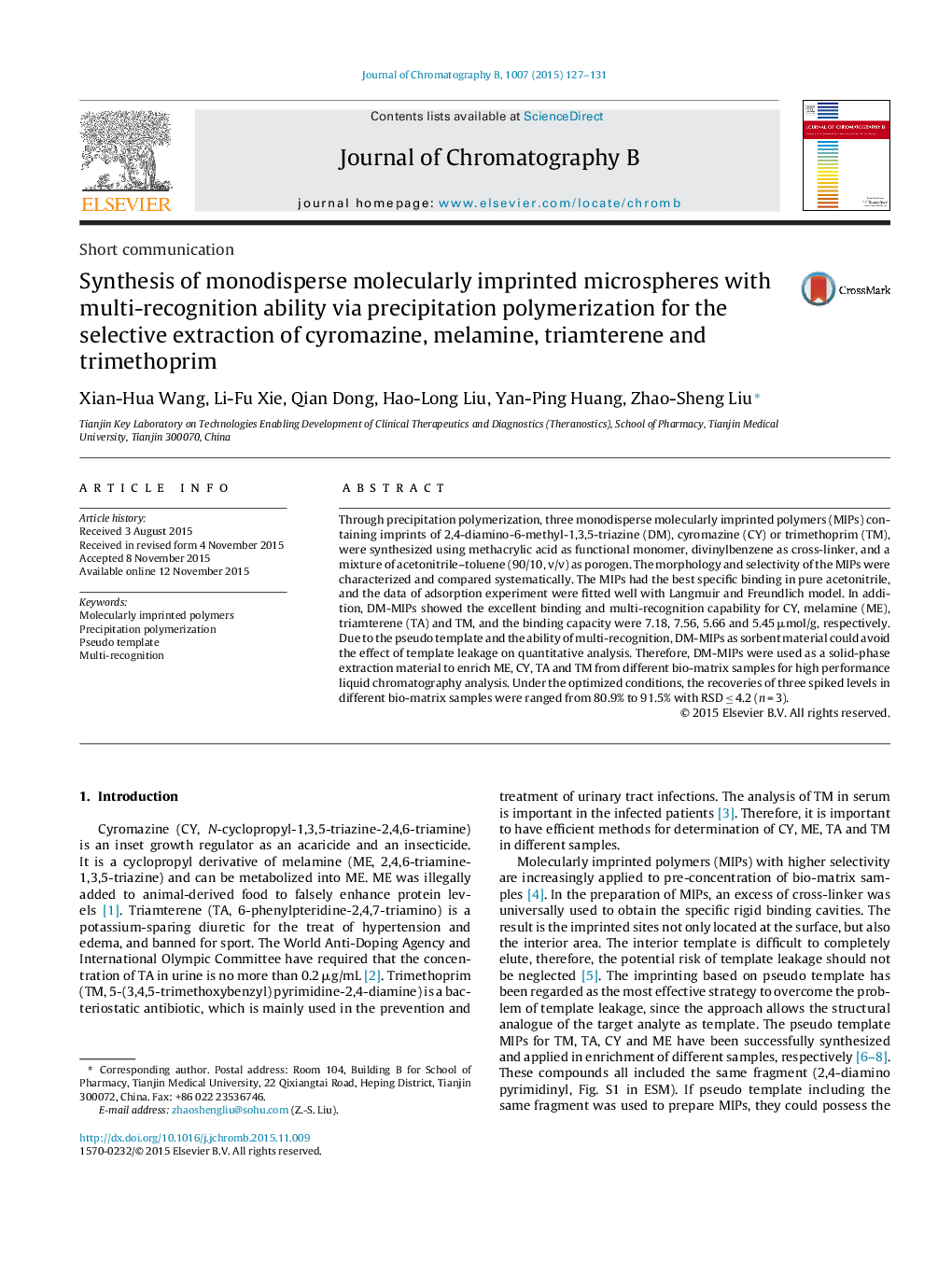| Article ID | Journal | Published Year | Pages | File Type |
|---|---|---|---|---|
| 1212010 | Journal of Chromatography B | 2015 | 5 Pages |
•Three monodisperse molecularly imprinted polymers (MIPs) were prepared by precipitation polymerization.•The pseudo template MIPs showed the multi-recognition capability for cyromazine, melamine, triamterene and trimethoprim.•The pseudo template MIPs used as SPE material could avoid the “template leakage”.•The MISPE-HPLC was successful used to determine trace substances in different bio-matrix samples.
Through precipitation polymerization, three monodisperse molecularly imprinted polymers (MIPs) containing imprints of 2,4-diamino-6-methyl-1,3,5-triazine (DM), cyromazine (CY) or trimethoprim (TM), were synthesized using methacrylic acid as functional monomer, divinylbenzene as cross-linker, and a mixture of acetonitrile–toluene (90/10, v/v) as porogen. The morphology and selectivity of the MIPs were characterized and compared systematically. The MIPs had the best specific binding in pure acetonitrile, and the data of adsorption experiment were fitted well with Langmuir and Freundlich model. In addition, DM-MIPs showed the excellent binding and multi-recognition capability for CY, melamine (ME), triamterene (TA) and TM, and the binding capacity were 7.18, 7.56, 5.66 and 5.45 μmol/g, respectively. Due to the pseudo template and the ability of multi-recognition, DM-MIPs as sorbent material could avoid the effect of template leakage on quantitative analysis. Therefore, DM-MIPs were used as a solid-phase extraction material to enrich ME, CY, TA and TM from different bio-matrix samples for high performance liquid chromatography analysis. Under the optimized conditions, the recoveries of three spiked levels in different bio-matrix samples were ranged from 80.9% to 91.5% with RSD ≤ 4.2 (n = 3).
